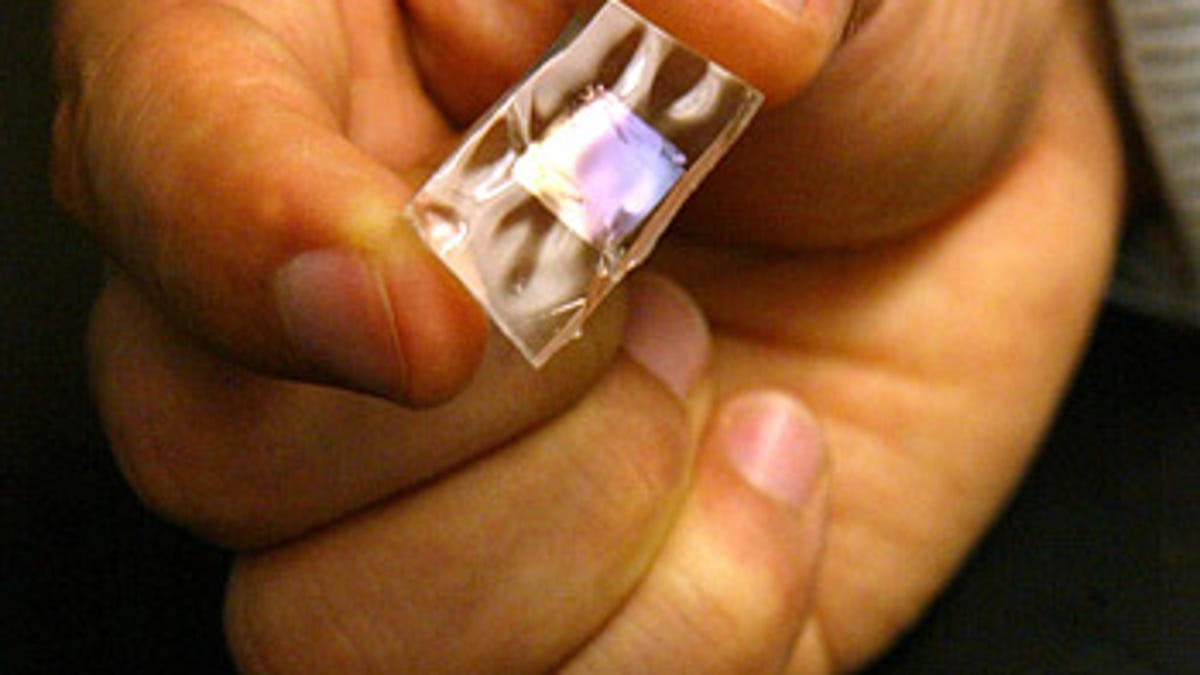Energy-harvesting rubber could power phones
Researchers from Princeton and Caltech come up with a piezoelectric material that could harness body movements to charge consumer electronics--even pacemakers.

Talk about the rubber hitting the road. Researchers from Princeton and Caltech have come up with a power-generating rubber material that could harness walking and other movement to charge electronic devices.
The material is made from nanoribbons composed of lead zirconate titanate, or PZT, a ceramic substance that's "piezoelectric," meaning it generates an electrical voltage when pressure is applied. The "piezo-rubber chips" are embedded in clear silicone rubber sheets that produce electricity when flexed.
The scientists--who detail their findings in the new issue of Nano Letters, a journal of the American Chemical Society--say the rubber sheets could one day appear in shoes that power cell phones and other mobile electronic devices as the user walks or runs.
What's more, "the new electricity-harvesting devices could be implanted in the body to perpetually power medical devices, and the body wouldn't reject them," said Michael McAlpine, an assistant professor of mechanical and aerospace engineering at Princeton who led the project.
For example, the biocompatible material could be placed next to a person's lungs and utilize breathing motions to power pacemakers, the scientists say. That could reduce the need for surgery to replace batteries in the device.
We've heard of other gadgets that can be powered by kinetic energy, including the Dance Charge, which is strapped around the arm and powered, as the name suggests, by dancing. Still, it can be hard to significantly power devices through movement alone. M2E Power, one company that had designed and tested a human-powered charger for cell phones and other gadgets, sold its assets to Motionetics last year and changed its focus to the vehicle market.
The Princeton/Caltech researchers say they're hopeful about their method; they maintain that PZT is the most efficient of all piezoelectric materials, able to convert 80 percent of the mechanical energy applied to it into electrical energy. For their product, the PZT is made into nanoribbons so narrow that 100 fit side-by-side in the space of a millimeter.
"PZT is 100 times more efficient than quartz, another piezoelectric material," McAlpine said. "You don't generate that much power from walking or breathing, so you want to harness it as efficiently as possible."

